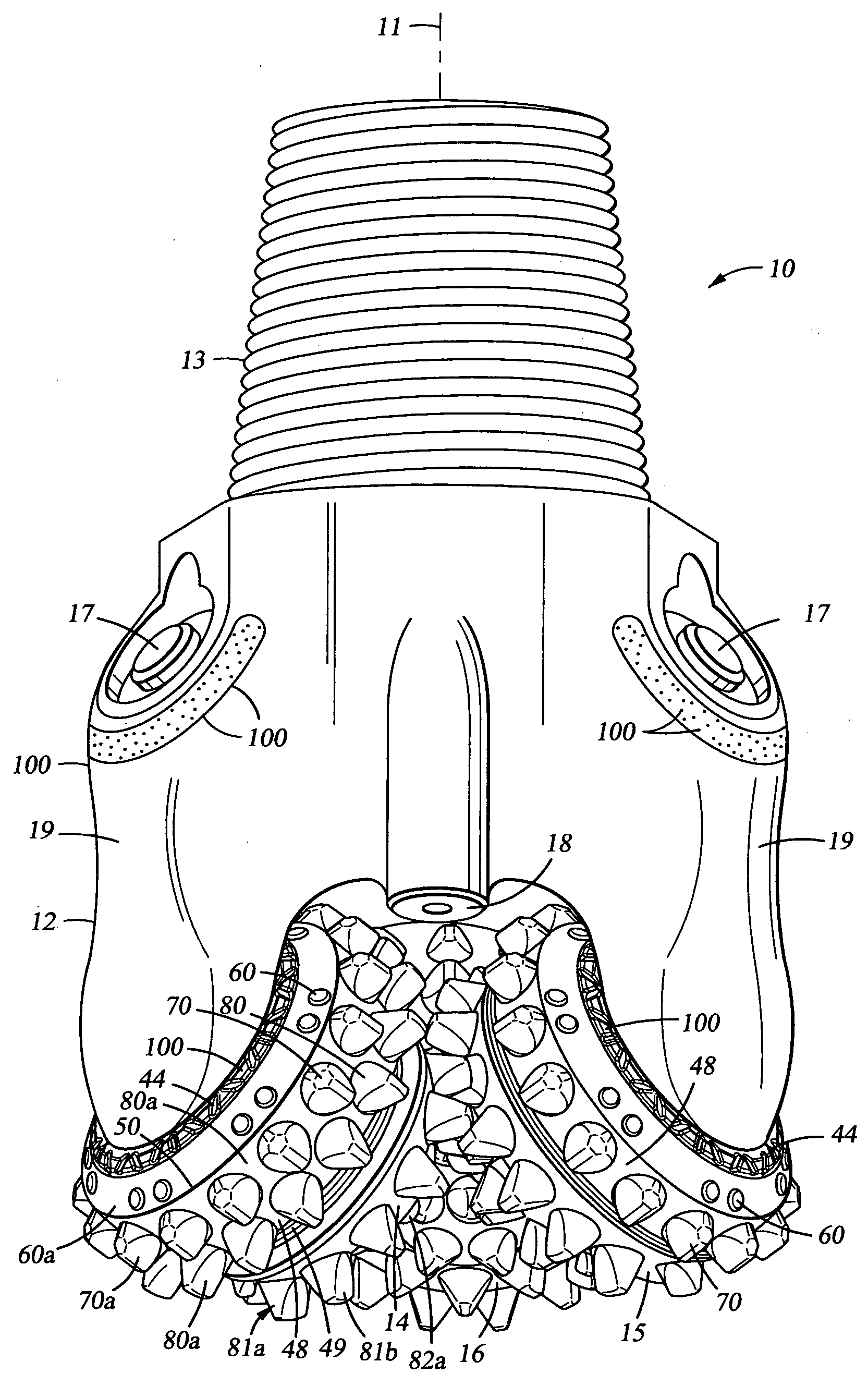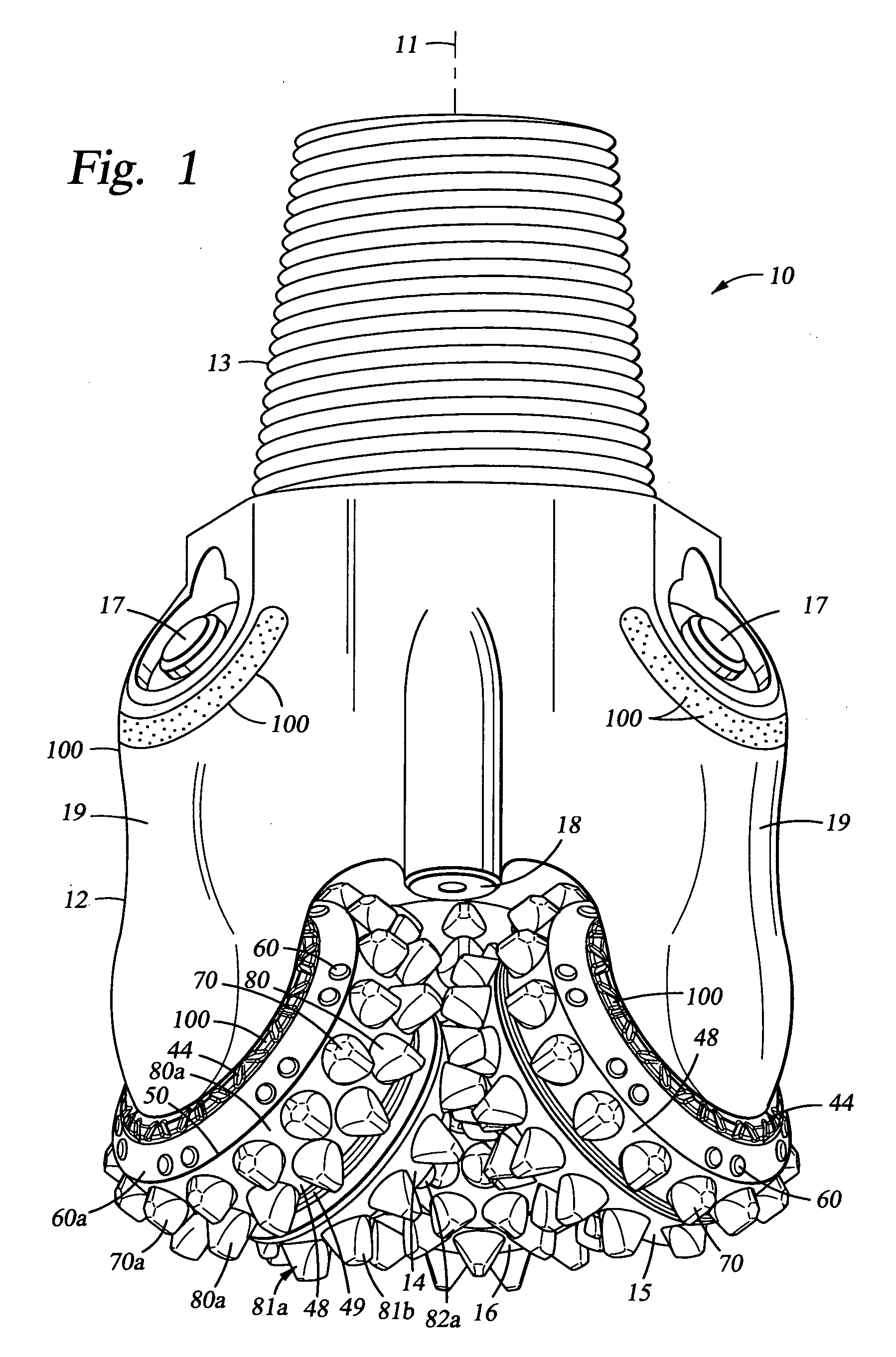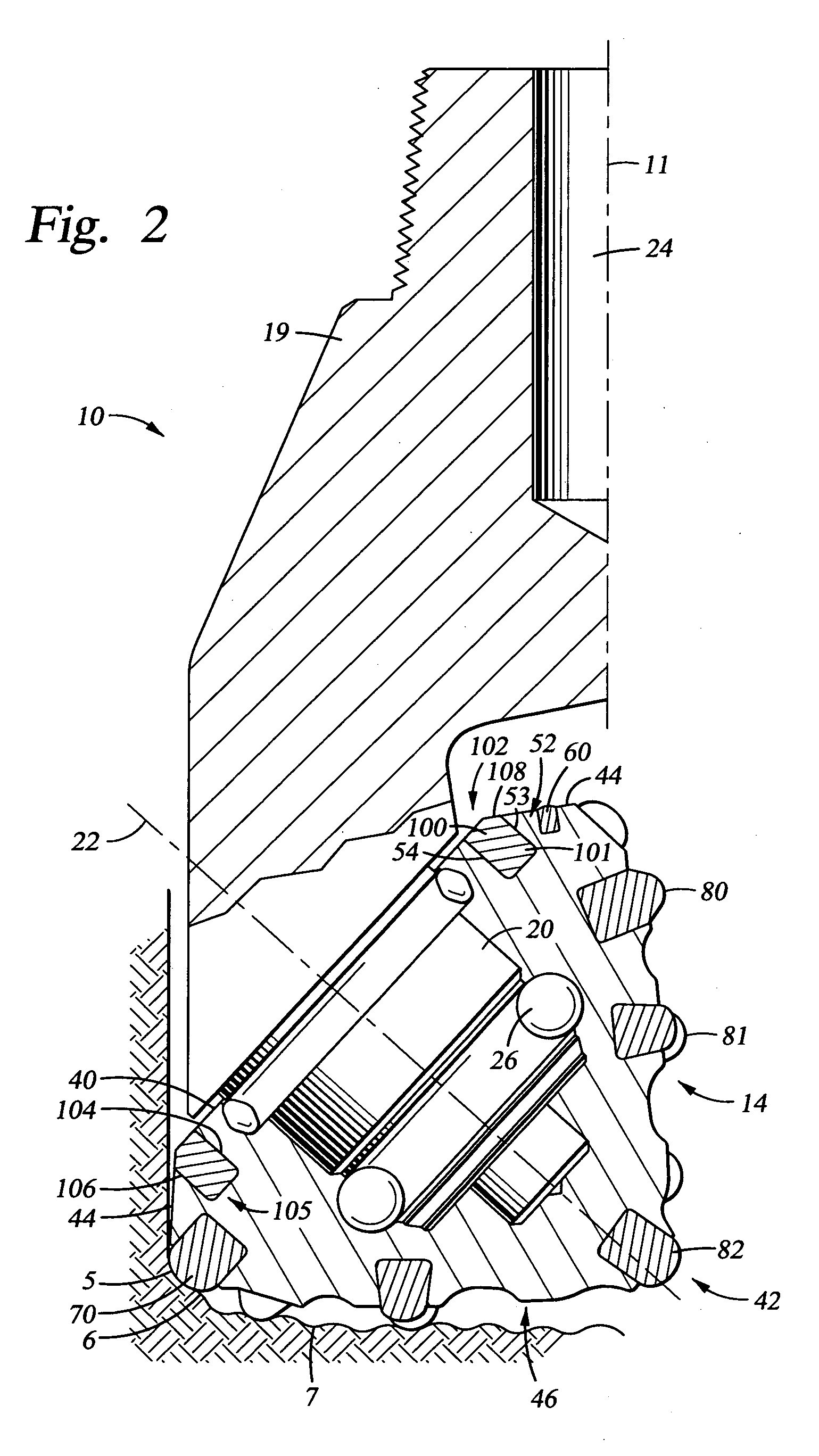Arcuate-shaped inserts for drill bit
a drill bit and insert technology, applied in the field of earth-moving bits, can solve the problems of affecting the resistance of the insert, affecting the performance of the drill bit, and requiring considerable time, effort and expense, and achieving the effect of enhancing the insert's ability to resis
- Summary
- Abstract
- Description
- Claims
- Application Information
AI Technical Summary
Benefits of technology
Problems solved by technology
Method used
Image
Examples
Embodiment Construction
[0013] Preferred embodiments of the invention are disclosed that provide an earth boring bit having enhancements in cutter element design and in manufacturing techniques that provide the potential for increased bit life and footage drilled at full gage, as compared with similar bits of conventional technology. The embodiments disclosed include arcuate-shaped inserts of various arcuate lengths made through a conventional manufacturing process such as HIP. These inserts are disposed within a groove formed in the cone cutter of the rolling cone bit. Such inserts may also be placed in grooves formed elsewhere on the bit.
[0014] In certain embodiments, the arcuate-shaped inserts are disposed in an end-to-end relationship within the groove in the cone and substantially fill the cone groove. In other embodiments, the insert is a ring-shaped insert having a 360° arcuate length. In one aspect of the invention, inserts having 360° arcuate length are retained in a cone groove by interference f...
PUM
 Login to View More
Login to View More Abstract
Description
Claims
Application Information
 Login to View More
Login to View More - R&D
- Intellectual Property
- Life Sciences
- Materials
- Tech Scout
- Unparalleled Data Quality
- Higher Quality Content
- 60% Fewer Hallucinations
Browse by: Latest US Patents, China's latest patents, Technical Efficacy Thesaurus, Application Domain, Technology Topic, Popular Technical Reports.
© 2025 PatSnap. All rights reserved.Legal|Privacy policy|Modern Slavery Act Transparency Statement|Sitemap|About US| Contact US: help@patsnap.com



